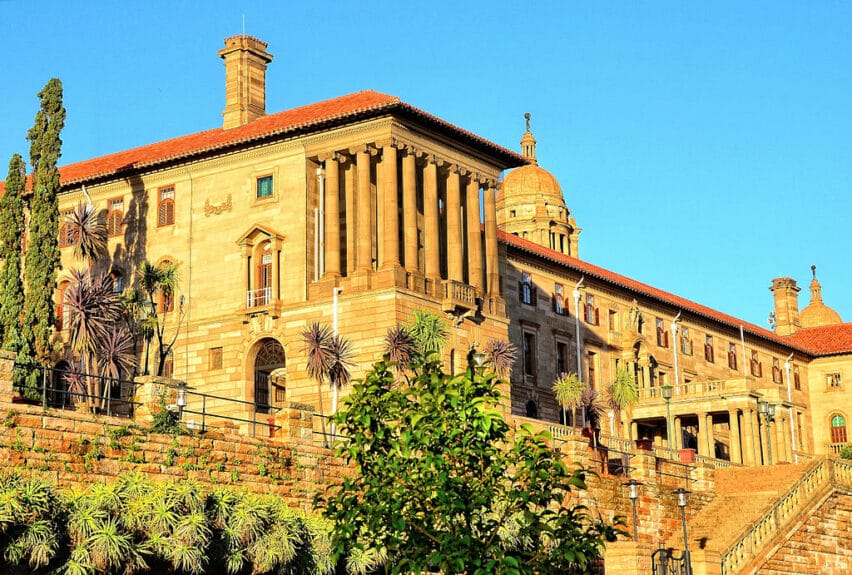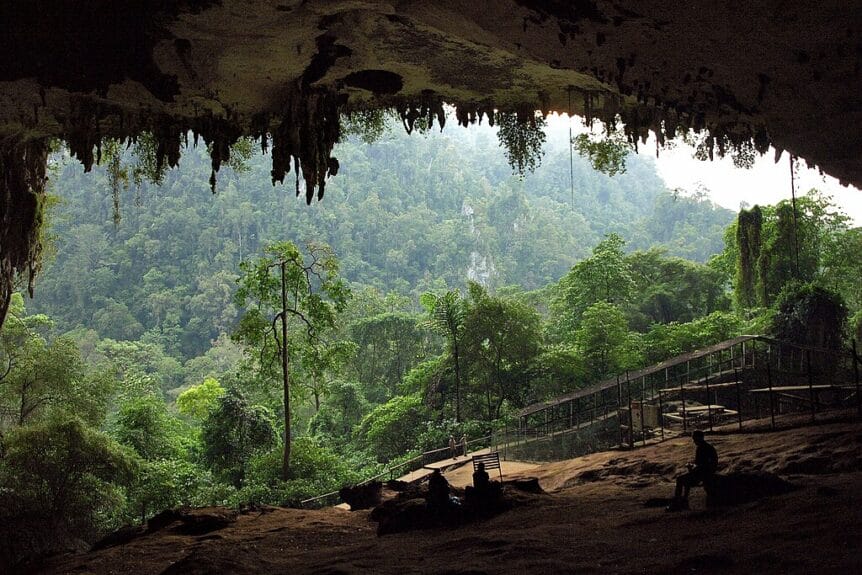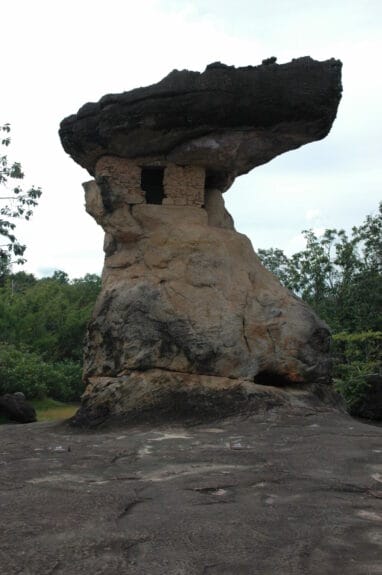Every year, UNESCO announces new destinations to add to the list of World Heritage Sites. In 2024, an impressive number of 24 places from 21 different countries have been picked. Curious to see which ones were chosen?
Here are the 24 new UNESCO World Heritage Sites by continent, from Europe to South America.
Basics of UNESCO World Heritage Sites
The World Heritage Sites program is the most prestigious list of protected areas. It’s run by UNESCO, a United Nations agency.
It currently includes more than 1200 different locations across 168 countries — Italy being the country with the most sites. They can be classified into 3 different categories: cultural, natural, or mixed (cultural AND natural).
For a location to be designated as a UNESCO World Heritage Site, it must first be nominated by its host country and placed under government protection. Once UNESCO grants the designation, the site is recognized globally as a protected area of outstanding value to humanity.
So, as you can probably tell, this program is critical in order to help conserve and safeguard important destinations in the world.
The good news is it expands every year.
South America’s 1 new UNESCO World Heritage Site
Here is the new site in 1 country in South America.
1. Lençóis Maranhenses National Park (Brazil 🇧🇷)

The Lençóis Maranhenses National Park, Brazil, is known for its vast white coastal dune field, with both temporary and permanent lagoons. I recently wrote a guide detailing everything you need to know before visiting this spot. Trust me, it’s a must-visit if ever in Brazil!
Europe’s 7 new UNESCO World Heritage Sites
Here are the new sites in 6 different countries in Europe.
1. Brâncuși Monumental Ensemble of Târgu Jiu (Romania 🇷🇴)

This modernist sculptural ensemble, located in the city of Târgu Jiu, is a homage to the people who fought to defend the area during World War I. It was created by Romanian sculptor Constantin Brâncuși in the 1930s, and it consists of 3 large-scale outdoor sculptures across 2 different public parks.
2. Frontiers of the Roman Empire – Dacia (Romania 🇷🇴)

The Dacian Limes is a region in Romania that was once part of the Roman Empire. So, around the area, you can find more than 250 historical constructions — including fortresses and watch towers, among others — that makes it the most complex ancient Roman construction site in all of Europe.
3. Vjetrenica Cave (Bosnia and Herzegovina 🇧🇦)

This is the largest cave in Bosnia and Herzegovina and the most biodiverse cave in the whole world. Located in the village of Ravno, the locally known as Špilja Vjetrenica is home to the only subterranean tubeworm we know of, among many other species — some of which can be considered living fossils! 😱
4. Via Appia (Italy 🇮🇹)

Also known as The Appian Way, this is one of the earliest (and probably most famous) Roman roads from ancient times, dating back to the end of the 4th century BC. It spanned through 800 km from Rome to Brundisium (nowadays Brindisi). Today, you can still find the first 16km preserved as a regional park, the Parco dell’Appia Antica.
5. Schwerin Residence Ensemble (Germany 🇩🇪)

Located in the city of Schwerin, this impressive property consists of 38 constructions, including a Palace and a museum, mostly done through the 19th century. The buildings reflect the historical architecture of the time, with many different style influences such as the neo-Renaissance, neo-Baroque, neo-Classical, and even some elements from the Italian Renaissance.
6. Flow Country (United Kingdom 🇬🇧)

The Flow Country is a vast peatland — a type of wetland where the soil is rich in organic matter — in Scotland, covering about 4,000 km². It’s the largest blanket bog in Europe, containing more carbon than all of the UK’s forests combined. So, naturally, it plays a vital role in climate change reduction, acting as a carbon sink. Fun fact: this is the first-ever peatland to become a World Heritage Site!
7. Cultural Landscape of Kenozero Lake (Russia 🇷🇺)

Kenozero National Park in north-western Russia is a fascinating place known as a cultural landscape — a spot where nature and culture blend together. It dates back to the 12th century and reflects a mix of indigenous Finno-Ugric forest culture and Slavic field tradition. It’s also here that you can find the iconic wooden buildings with their painted ceilings, called “heavens”.
Africa’s 5 new UNESCO World Heritage Sites
Here are the new sites in 4 different countries in Africa.
1. Royal Court of Tiébélé (Burkina Faso 🇧🇫)

This used to be the official residence of the pè, or community chief for the Kassena people from northern Ghana and Burkina Faso. The complex was built around the 16th century and is now an architectural site located in Tiébélé, consisting of a circular arrangement of earthen buildings, including sacred sites and huts decorated with symbolic artwork.
2. Melka Kunture and Balchit (Ethiopia 🇪🇹)

The Melka Kunture, located in the Upper Awash Valley of Ethiopia, is a cluster of archaeological sites that contains primate fossils and tools dating back 2 million years! This spot was discovered in 1963, and since 2019, it has been researched by an Italo-Spanish mission in agreement with the Ethiopian government.
3. Historic Town and Archeological Site of Gedi (Kenya 🇰🇪)

Also known as “the ruins of Gedi,” this area is where you can find the remnants of Gedi, once a significant Swahili city from the 10th to 17th centuries. The site features well-preserved social and religious structures, reflecting the Swahili forward-for-its-time architecture and town planning. They even had a sophisticated water management system!
4. Nelson Mandela Legacy sites (South Africa 🇿🇦)

As the name suggests, these are 14 sites located around South Africa that represent the country’s 20th-century political history and the struggle for human rights. Some places included are the Union Buildings in Pretoria, the Sharpeville Sites, and The Great Place at Mqhekezweni, where Nelson Mandela lived.
5. Pleistocene Occupation Sites (South Africa 🇿🇦)

These are actually 3 different archaeological sites: the Diepkloof Rock Shelter, the Pinnacle Point Site Complex, and Sibhudu Cave. What connects them is that they all contain artifacts that offer significant insights into the origins of modern human behavior — some of which date back as far as 162,000 years!
The Middle East’s 4 new UNESCO World Heritage Sites
Here are the new sites in 4 different countries in the Middle East.
1. Umm Al-Jimāl (Jordan 🇯🇴)

Umm el-Jimal is a village in northern Jordan; it began as a rural settlement on the ruins of a Roman site around the 5th century and remained active until the late 8th century. But it doesn’t stop there; throughout its history, this spot was home to people of various languages and religions, so naturally, the site is nowadays a focus of archaeological research.
2. Saint Hilarion Monastery / Tell Umm Amer (Palestine 🇵🇸)

The Saint Hilarion Monastery ruins, located at the archaeological site of Tell Umm Amer in the Gaza Strip, are among the earliest monastic sites in the Middle East — they date back to the 4th century! Sadly, this is the only destination in this list to also be classified as World Heritage Sites in Danger, given the conflict in its location.
3. Hegmataneh (Iran 🇮🇷)

Ecbatana, also known as Hegmataneh, is the archeological site of the historical city of the same name that has been continuously inhabited for nearly 3,000 years, offering rare evidence of the Medes civilization (6th-7th centuries). Even more impressive, such as Athens in Greece or Rome in Italy, this is one of the few ancient cities alive to this day, now known as Hamadan.
4. Cultural Landscape of Al-Faw Archaeological Area (Saudi Arabia 🇸🇦)

The archaeological site of Al-Faw shows evidence of human occupation from early nomadic settlements to a thriving urban center in the 1st millennium BC. Although abandoned around the 5th century, approximately 12,000 archaeological remains have been found at Al-Faw, including ancient springs, an extensive irrigation network, and a rich cultural landscape.
Asia’s 6 new UNESCO World Heritage Sites
Here are the new sites in 5 different countries in the rest of Asia.
1. Beijing Central Axis (China 🇨🇳)

The Beijing Central Axis is the historic north-south stretch in the heart of Beijing, China. In this area, you can see former imperial palaces, gardens, and all sorts of traditional constructions — such as the iconic Forbidden City and Tiananmen Square. The site reflects Chinese architecture and serves as a symbol of Chinese history and aesthetics.
2. Badain Jaran Desert (China 🇨🇳)

The Badain Jaran Desert is China’s 3rd-largest desert, covering 49,000 km². It’s known for its vast dunes — some exceeding 400 meters in height! The desert is also characterized by over 100 fresh and saline lakes nestled between the dunes.
3. Moidams (India 🇮🇳)

The Assam’s Charaideo Maidams, also known as Frang-Mai-Dam, are traditional burial mounds of the Ahom Dynasty. These structures, often compared to the pyramids of Egypt and ancient Chinese tombs for their meaning, consist of vaults with domed structures covered by earth.
4. Sado Island Gold Mines (Japan 🇯🇵)

These mines, located on Sado Island, Japan, are a collection of historic sites illustrating various traditional mining methods. The largest mine, Aikawa Gold and Silver Mine operated from the Edo Period (1603–1867) until 1989.
5. Archaeological Heritage of Niah National Park’s Caves Complex (Malaysia 🇲🇾)

The Niah Caves, located in Niah National Park, are a significant archaeological site with evidence of human interaction with the rainforest, spanning at least 50,000 years! The site includes rich archaeological deposits, prehistoric rock paintings, and boat-shaped burials, offering valuable insights into human development and migration.
6. Phu Phrabat (Thailand 🇹🇭)

Phu Phrabat is a historical park in Thailand known for its unique rock formations around which religious shrines have been built. The park also features prehistoric rock paintings and serves as a significant example of the Sīma stone tradition from the Dvaravati period (7th-11th centuries).
Oceania’s 1 new UNESCO World Heritage Site
Here is the new site in 1 country in Oceania.
1. Te Henua Enata, The Marquesas Islands (French Polynesia 🇵🇫)
The Marquesas Islands, located in the South Pacific Ocean, are recognized for their exceptional testimony to human civilization’s occupation of the archipelago from around the early 11th to the 19th century. The islands are also a biodiversity hotspot with well-preserved marine and terrestrial ecosystems, making it the only destination in this list to be a mixed heritage site.
Learning how to travel for less
Join over 100,000 savvy Canadian travelers who already receive Flytrippers’ free newsletter so we can help you travel for less (and keep you updated on all things travel)!
Summary
Every year, UNESCO announces new destinations on the World Heritage Sites list. In 2024, an impressive number of 24 places within 21 different countries have been picked. Hopefully, this brief introduction to each one will inspire you on your next trip!
What would you like to know about these 24 new UNESCO Heritage Sites in 2024? Tell us in the comments below.
See the flight deals we spot: Cheap flights
Discover free travel with rewards: Travel rewards
Explore awesome destinations: Travel inspiration
Learn pro tricks: Travel tips
Featured image: Lençóis Maranhenses National Park, Brazil (photo credit: gabriel xu)

